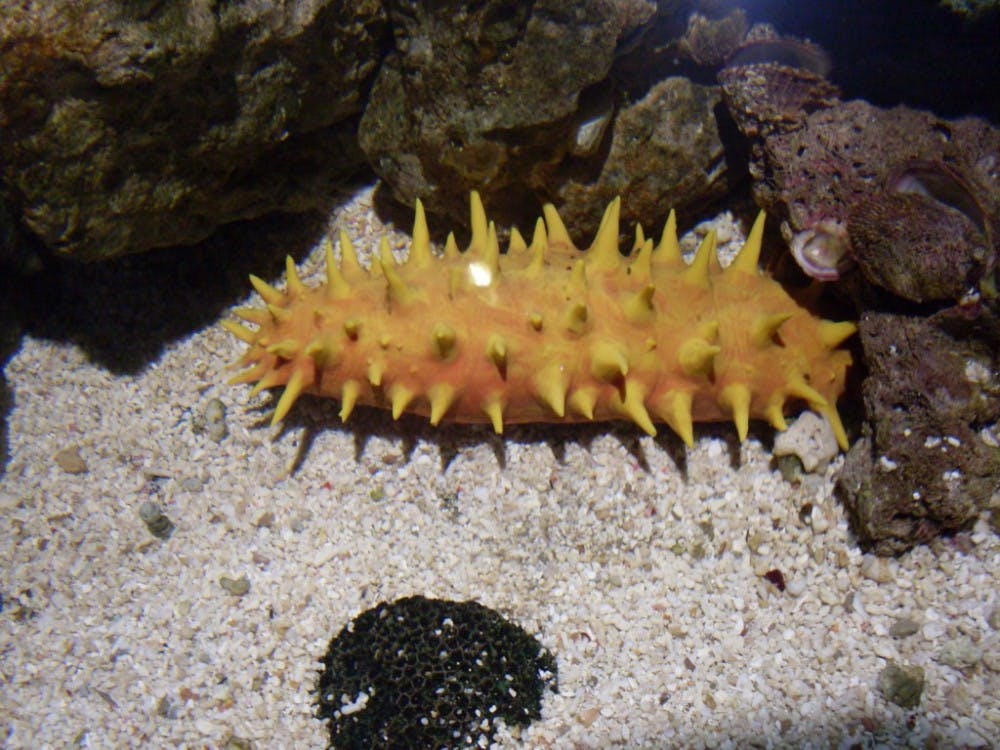A recent discovery showed that seemingly rigid natural materials can be highly adaptable. For instance, bone, a stiff material that is commonly thought to be non-malleable, can remodel itself after facing stress. The sea cucumber, which recycles nutrients in marine ecosystems, can reversibly and rapidly increase the stiffness of its leathery skin.
Researchers at Cornell University’s Department of Mechanical and Aerospace Engineering recently grew interested in emulating these properties by creating synthetic materials with real-world applications.
Professors Meredith Silberstein and Rob Shepherd set out to reproduce a composite material with six of these properties: reversible stiffness, the ability to undergo 200 percent strain stretch under heat, memory of shape after deformation, non-automatic and heat-triggered self-healing, assembly into larger continuous structures from smaller sub-components and strengthening along the primary axis of deformation after morphing.
“It’s sort of like us — we have a skeleton, plus soft muscles and skin,” Shepherd said in a press release. “Unfortunately, that skeleton limits our ability to change shape — unlike an octopus, which does not have a skeleton.”
The scientists assembled a bicontinuous product by fabricating a silicone elastomer with metal pores composed of an alloy of indium, tin and bismuth. At temperatures below 62˚C, the composite was a stiff metal. On the other hand, once above this temperature threshold, the metal would melt and the elastic, and the adaptable properties of the silicone would take over.
The composite was implemented on a tentacle that was pneumatic or operated by air or gas pressure. This way, the tentacle demonstrated a rigid structure except when heated, at which point its shape became adjustable. The material was similarly characterized as a metal wing, which could easily be bent once the metal was liquefied.
To test the self-healing capabilities of the material, small cuts were made on the material with scissors. After allowing the metal to melt and fuse, scientists observed minimal to negligible visual changes to the material. They found the self-healed sample to have about 78 percent of the virgin sample’s inelastic limit. The decrease in the material’s tensile strength and toughness was caused by the irreparable damage done to the elastomer.
The composite showed such a strong self-healing aptitude that after the worst-case scenario happened — complete severing of the composite resulting in two halves of the sample — the material was able to restore itself into one piece. To ensure the retention of load support capability, the self-healed composite was put through a mechanical test in which it displayed properties similar to the virgin sample.
While the self-healed sample had a plane of discontinuity from the elastomer, it exhibited levels of toughness comparable to the virgin sample.
Due to its useful properties and low toxicity, the researchers hope the composite can be helpful for biomedical engineers.
“In general, we want the things we make in this lab to be potentially biocompatible,” Ilse Van Meerbeek, graduate student and coauthor of the study, said in a press release.
This material could potentially be used by orthopedic surgeons, who are usually in need of structures that can assimilate to patients’ bodies in ways that meet their individual needs.
Meerbeek also foresaw a more futuristic application of the new material.
“It could be used in search-and-rescue robots,” she said. “It would be able to go into dangerous and/or unpredictable environments and be able to go through narrow cracks, which rigid robots can’t do.”
While the future uses of the composite are still unknown, the team has started thinking about its next steps. Through 3-D printing, the composite’s production could be automatized, and its characteristics could be precisely varied according to customers’ desires. Moreover, the team hypothesized that using thermoplastic — a cheap and biocompatible material — instead of metal could reveal similar findings.





